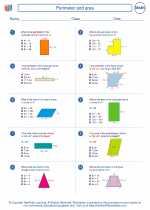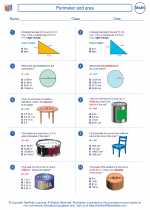Comparison in Mathematics
When we compare numbers or objects in mathematics, we are looking at their similarities and differences. This is an essential skill in elementary and middle school mathematics.
Comparing Numbers
When comparing numbers, we often use symbols to show the relationship between them.
- To show that one number is greater than another, we use the symbol > (greater than).
- To show that one number is less than another, we use the symbol < (less than).
- To show that two numbers are equal, we use the symbol = (equal to).
Example:
Compare the numbers 12 and 8.
12 > 8 (12 is greater than 8)
Comparing Fractions
When comparing fractions, we can find a common denominator and then compare the numerators.
Example:
Compare the fractions 3/4 and 2/3.
First, find a common denominator, which is 12. Then, convert both fractions to have the same denominator: 3/4 = 9/12 and 2/3 = 8/12 Now we can compare the numerators: 9/12 > 8/12 (3/4 is greater than 2/3)
Comparing Decimals
When comparing decimals, we can use the same symbols as when comparing whole numbers.
Example:
Compare the decimals 0.6 and 0.75.
0.75 > 0.6 (0.75 is greater than 0.6)
Comparing Objects
In math, we can also compare objects based on their attributes, such as size, shape, or quantity. This can involve using words like "bigger," "smaller," "heavier," "lighter," "taller," "shorter," etc.
Example:
Compare the following shapes based on their areas.
Triangle A has an area of 20 square units and Triangle B has an area of 15 square units. Triangle A is bigger than Triangle B.
Study Guide
Here are some tips for comparing numbers, fractions, decimals, and objects:
- When comparing numbers, always check the relationship between the numbers using the greater than, less than, or equal to symbols.
- When comparing fractions, find a common denominator and then compare the numerators.
- When comparing decimals, use the same symbols as when comparing whole numbers.
- When comparing objects, consider the specific attributes being compared (size, shape, quantity, etc.) and use appropriate descriptive words.
Practice comparing different sets of numbers, fractions, decimals, and objects to improve your skills in comparison. This will also help you understand the concept better.
Remember, comparison is a fundamental skill in mathematics and is used in various real-life situations.
[Compare] Related Worksheets and Study Guides:
.◂Math Worksheets and Study Guides Eighth Grade. Perimeter and area

 Worksheet/Answer key
Worksheet/Answer key
 Worksheet/Answer key
Worksheet/Answer key
 Worksheet/Answer key
Worksheet/Answer key
 Worksheet/Answer key
Worksheet/Answer key
